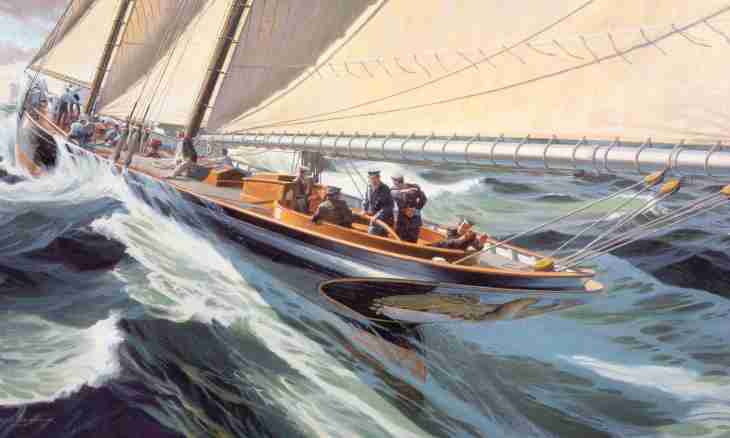It is difficult to become strong and courageous, without having experienced vital deprivations and without having thrown itself on fight. Seafarers, especially last centuries, could agree with it. Designs of the very first boats and sailing vessels very well helped strengthening of human character.
Most likely, the log which bore on a current was the first watercraft. Then someone guessed to connect together three-four logs – the raft turned out. And once to someone the idea to hollow deepening in a log came. So there was a canoe.
The first canoe was hollowed in the Netherlands by means of the axe or tesla (the axe with an edge at right angle to the handle) by about 6300. In areas where trees grew very little, the boats did not hollow out, and did, pulling a skin of an animal on a wooden framework or pasted bark to a framework, using pitch or bitumen for pasting and moisture impermeability.
At first such boats were bezveselny and the people sitting in them rowed with hands. Later there were long poles, and then oars.
The first sailing vessels were constructed in Egypt about 5000 years ago. The rectangular sail on them was set on a biped mast, only when the fair wind blew. About 2600 there were more perfect vessels which wood for production was brought from Lebanon. Use of long boards gave the chance to increase the ship sizes, to make a flooring of the deck and to strengthen the case longitudinal and cross beams. The sail fixed on a single-barreled mast did control of the vessel easier and effective: now it was possible to float not only at passing, but also at a side wind.
Once near pyramid of Cheops of a ball the boat 43 m long consisting of 1200 wooden details is found. Such find 2500 BC is dated.
Phoenicians had ships of two types: military long high-speed vessels and trade wide with a mast in the middle of the deck and a square sail. Greeks borrowed some ideas of designs of Phoenician vessels. Approximately by 700 BC as the main vessels of the military of the fleet the Greeks began to use birema – vessels with two rows of oars on each board, and since 650 trimmers – the ships where oars were located in three ranks.
In the 1st century AD in China the rigid axial wheel and sails from bamboo laths and mats were invented. On each mast several sails which had to be operated separately depending on the direction and wind force fixed not one, and. Modern Chinese junks are equipped with similar sails.
In the 3rd century the Arab seafarers began to establish a Latin triangular sail by the ships. Advantage of such sail was that it could be turned and put so that the vessel could go almost at any angle by wind. Modern single-masted Arab vessels (daa) in the most part have triangular sails.
A bit later by the ships crossing the Mediterranean Sea, Latin sails were combined with rectangular. Caravels with four masts, for example, had two quadrangular sails and two straight lines. Under such sails the seafarers from Spain and Portugal made the well-known discoveries.

